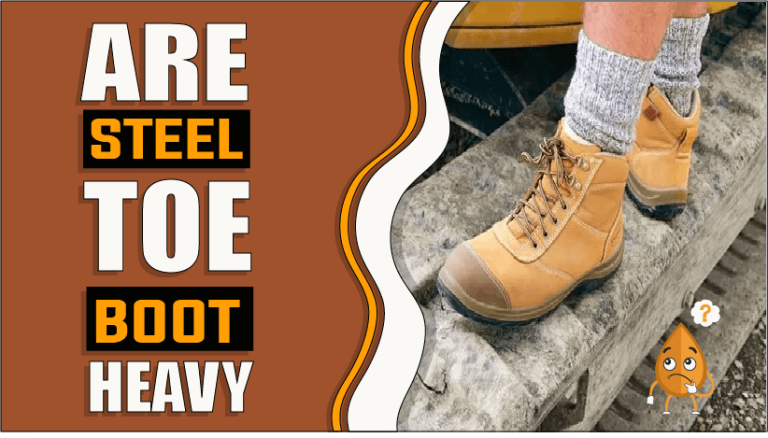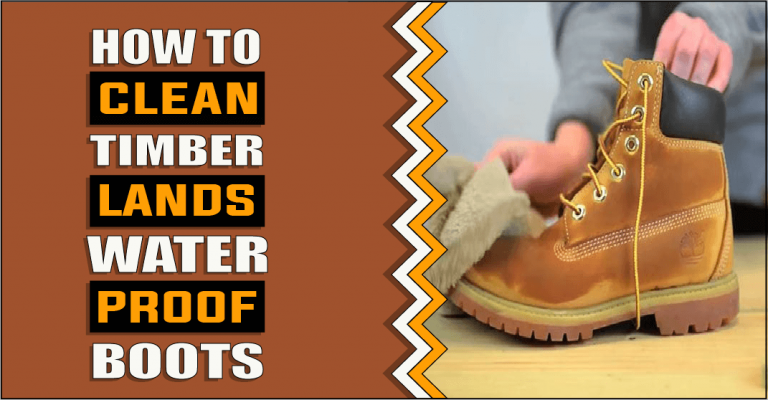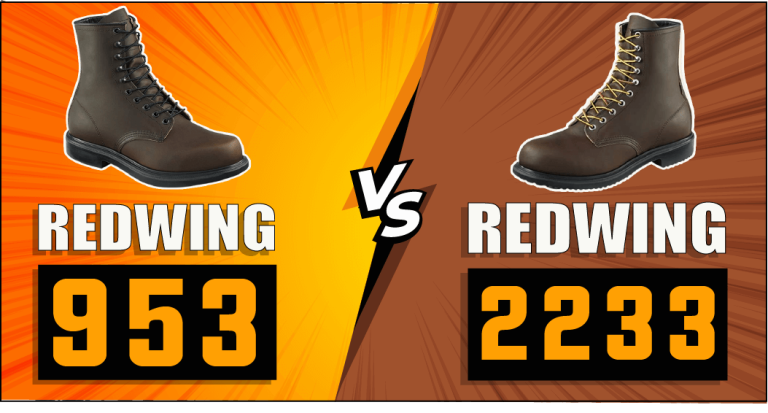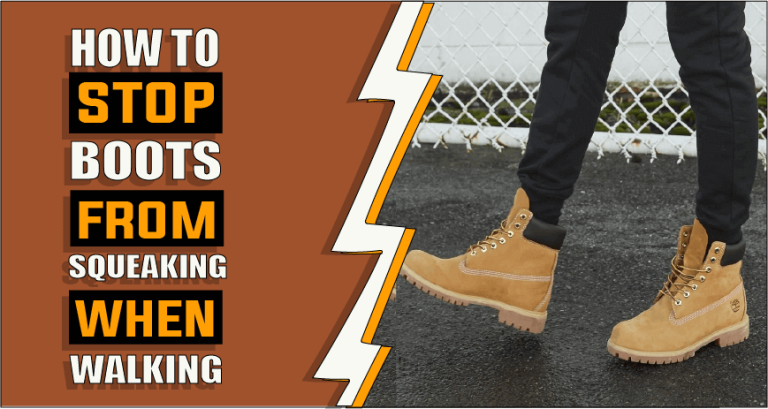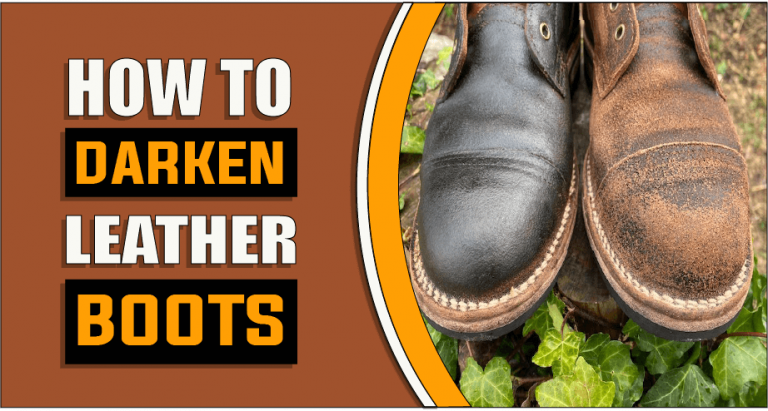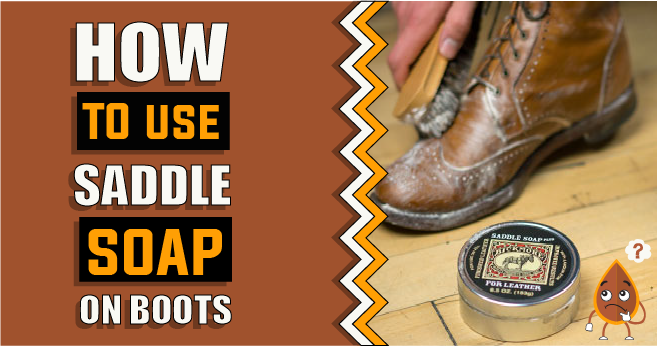How To Keep Feet Dry In Work Boots?
When it comes to working boots, one of the most important things is to make sure your feet stay dry. When your feet are wet and cold, it can be extremely uncomfortable and even dangerous. In this blog post, we will discuss some tips on how to keep feet dry in work boots. We’ll also provide complete detail on each of these tips. So, whether you’re just getting started in the workforce or you’ve been wearing boots for years, read on for some valuable advice!
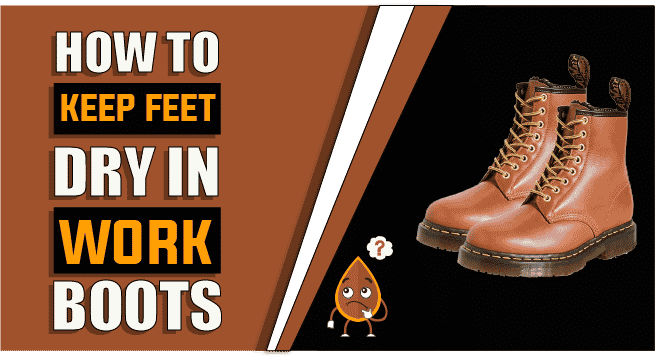
Let’s discuss how to keep feet dry in work boots
Wet feet can ruin your day, whether you’re out in the rain or working in wet conditions. And while there are a variety of waterproof boots on the market designed to keep your feet dry, they’re not always 100% effective. If you want to make sure your feet stay dry all day long, there are a few things you can do to help.
1: Wear socks that absorb sweat and moisture – Look for socks that are made from materials like wool or cotton, which are good at absorbing moisture. Avoid socks made from synthetic materials like polyester, which will make your feet sweat more.
2: Choose the right size boot – Make sure your boots fit snugly but not too tight. If they’re too loose, water can seep in through the gaps; if they’re too tight, your feet will sweat more.
3: Apply waterproofing spray – Before heading out, spraying your boots with a waterproofing spray can help create an extra barrier against water.
4: Allow your boots to air-dry between usage – Make sure your boots are entirely dry after a rainy day before putting them back on. By doing this, you’ll be able to stop germs and fungus from growing, which can lead to foot issues.
5: Consider wearing gaiters – If you’ll be walking through deep puddles or snow, wearing gaiters (waterproof covers that go over your boot and leg) can help keep your feet dry.
6: If your socks get wet, switch them out – If your socks do end up getting wet, change into a dry pair right away. This will prevent your feet from being chilly and unpleasant.
7: Wear well-fitting shoes – Wearing shoes that fit well and provide good support can help prevent blisters and other foot problems.
8: Take care of your feet – In general, taking care of your feet by keeping them clean and dry will help prevent problems like athlete’s foot.
9: Avoid walking through puddles – If you can, try to avoid walking through puddles or standing in water for extended periods. This will prevent your feet from being cold and will help keep them dry.
10: Wear waterproof boots – Of course, one of the best ways to keep your feet dry is to wear boots that are designed for wet conditions. Waterproof boots can be made from a variety of materials, including rubber, neoprene, and Gore-Tex. When choosing a pair of boots, make sure to pick ones that fit well and are comfortable to walk in.
11: Use boot liners – Boot liners (waterproof covers that go inside your boots) can help keep your feet dry and prevent moisture from damaging the interior of your boots.
You can keep your feet dry and at ease while wearing work boots by paying attention to these easy suggestions. Be sure to choose the right boot, take care of them properly, and wear the right socks. With a little bit of effort, you can enjoy all the benefits of wearing work boots without having to deal with sweaty or smelly feet.
Why do feet become wet with work boots?
There are a few reasons why feet can get wet in work boots.
1: If the work boots are not waterproof, then rain or snow can enter through the boot and soak the feet.
2: If the work boots are not properly ventilated, then sweat can build up inside the boot and make the feet wet.
3: If the work boots are not tight enough, then water can enter through gaps in the boot and make the feet wet.
4: If the work boots are made of a porous material, then water can seep through the boot and make the feet wet.
5: If the work boots are not clean, then dirt and grime can build up inside the boot and make the feet wet.
6: If the work boots have holes in them, then water can enter through the holes and make the feet wet.
7: If the work boots are not properly stored, then they can become moldy and make the feet wet.
8: If the work boots are not used for a long time, then they can become brittle and break, allowing water to enter and make the feet wet.
9: If the work boots are not regularly maintained, then they can develop leaks and allow water to enter and make the feet wet.
10: If the work boots are kept in a humid environment, then they can absorb moisture from the air and make the feet wet.
What are the results of having damp feet when wearing work boots?
If you have wet feet in your work boots, the effects might be disastrous. Wet feet can lead to blisters, athlete’s foot, and other problems. If you are working in a wet environment, it is important to make sure that your feet are dry before you put on your boots. Having wet feet might also make it challenging to maintain one’s balance. If you are working on a ladder or scaffolding, this may prove to be a safety concern As you run the risk of suffering terrible injuries if you slip and fall.
Another consequence of wet feet in work boots is that it can make your boots uncomfortable to wear. Your boots will rub against your skin and cause discomfort. You may also find that your boots start to smell bad because of your wet feet. It’s crucial to dry your feet as soon as possible if your feet get wet when wearing work boots. To dry your feet, use a towel or a hairdryer set to a low setting. If your boots are wet, you should also remove them and let them air dry. Moreover, you can also wear socks made of materials that can wick moisture away. This will allow your feet to remain dry and comfortable.
How to prevent your feet from getting wet in your work boots
There are a few things you can do to keep your feet from becoming wet if you have to operate in a wet area.
1: Wear work boots that are made of waterproof materials.
2: If your work boots are not designed with a waterproofing feature, you can also opt to apply waterproof agents like waterproofing spray.
3: Wear socks composed of moisture-wicking fabrics, such as wool or synthetic fibers.
4: Make sure the tops of your boots are covered by your work pants.
5: If possible, avoid puddles and standing water.
6: Change into dry socks and shoes as soon as possible if your feet do get wet.
7: Take care of your feet and dry them thoroughly if they do get wet.
8: Consider donning waders or hip boots if you need to labor in a wet environment for an extended amount of time.
How do you keep your feet from developing blisters?
Blisters are a common problem for many people, particularly during warmer months when we are more likely to be out and about in sandals or other open-toed shoes. Blisters can be painful and frustrating, but there are some things you can do to help prevent them from forming in the first place.
1: Choose the right shoes. Shoes that are too tight or too loose can rub against your skin and cause blisters. Put on socks when trying on shoes to ensure a more precise fit before you purchase them.
2: Break into new shoes gradually. If you’ve just bought a new pair of shoes, don’t wear them for hours on end right away. Instead, begin with brief periods and progressively extend the time you spend wearing them.
3: Wear appropriate socks. Socks that are too thin or too thick can cause blisters by bunching up or rubbing against your skin. Choose socks that fit well and provide some padding without being too bulky.
4: Protect vulnerable areas. Areas of your feet that are particularly prone to blisters include the back of the heel, the ball of the foot, and the toes. You can use bandages, moleskin, or other products to help protect these areas.
5: Keep your feet dry. Moisture can make your skin more susceptible to blistering, so try to keep your feet as dry as possible. If you’re going to be sweating, consider wearing moisture-wicking socks.
6: Take breaks. If you’re going to be on your feet for extended periods, take breaks every few hours to give your feet a rest. This will help prevent blisters from forming.
7: Inspect your shoes regularly. Check your shoes often for any areas that may be rubbing against your feet. If you find any, try to adjust them or add padding to help prevent further friction.
8: Be careful with the activity. If you participate in activities that are likely to cause blisters (such as running or hiking), take extra care to protect your feet, and be sure to break into new shoes gradually.
9: Understand that you should visit the doctor right away if blisters start to get infected. In some cases, blisters can become infected. If you have a blister that is red, swollen, or leaking pus, see a doctor right away.
You can lessen the likelihood of developing foot blisters by following these suggestions. But if you do get one, don’t worry – there are plenty of ways to treat them so that you can get back to your normal activities.
Are there any products that can help keep feet dry and blister-free?
There are numerous products available that can aid in preventing dryness and blisters on the foot. Some of these products include powders, sprays, creams, bandages, pads, and gels. powders can be sprinkled inside shoes to help absorb moisture. Before putting on socks or shoes, the feet can be coated with sprays. To help protect the feet from rubbing, creams can be administered directly to the feet. Bandages can be wrapped around the foot to provide a barrier between the skin and the shoe. Pads can be placed over areas that are prone to blisters. Gels can be applied directly to the skin to help reduce friction.
What are some recommendations for maintaining foot health while donning work boots?
If you wear work boots regularly, it’s important to take care of your feet to avoid problems such as blisters, calluses, and foot pain. Here are a few pieces of advice:
1. Pick the appropriate boot size: Your boots should be comfortable from the start, so make sure you choose a size that fits well.
2. Wear socks that protect your feet: Thick, padded socks will help to avoid blisters and foot pain.
3. Break in your boots gradually: Don’t wear your boots all day long the first time you put them on. Instead, wear them for a few hours at a time so that your feet can get used to them.
4. Keep your feet dry: Wet, sweaty feet are more prone to blisters and other problems. Hence, if your feet do get wet, consider switching your sock to dry ones.
5. Inspect your boots regularly. Look for symptoms of deterioration such as leather splits or loose stitching. These can cause serious problems if they’re not fixed.
By following these tips, you can help to keep your feet healthy and comfortable while wearing work boots.
Related Questions:
Your boots may be damp inside for many reasons. It could result from perspiration, rain, or snow. Living in a region with high humidity levels may also play a role. If your boots are made of leather or another natural material, they may not be as breathable as synthetic materials and therefore won’t allow your feet to ‘breathe.’ This can lead to sweaty and wet feet, which will in turn make your boots wet inside. If you suspect that humidity is the culprit, try using a boot dryer or wearing socks made of synthetic materials that wick moisture away from your feet.
Another reason your boots may be wet inside is that they’re not waterproof. If you’re caught in a rainstorm or walking through snow, your feet will likely get wet. In these circumstances, waterproof boots will aid you in keeping your feet dry.
Your feet may sweat a lot when wearing work boots for a few different reasons. First, your body will sweat to cool itself down if you are working in a hot environment. Second, if you are wearing boots that are too tight, they may not allow your feet to breathe properly, which can also lead to sweating. Finally, some people simply have sweaty feet, which is a condition called hyperhidrosis. You might wish to visit a doctor to discuss treatment options if your feet sweat a lot more than others.
To prevent your feet from sweating profusely while wearing muck boots, there are a few things you can do. First, try to choose a boot that has good ventilation. To keep your feet cool, look for boots with vents or mesh panels. Second, wear socks that wick moisture away from your skin. Thick, wool socks are a good choice for this. Finally, don’t wear your boots too tight. If they’re too snug, they won’t allow your feet to breathe and will trap moisture next to your skin.
Conclusion paragraph:
Now that you know how to keep feet dry in work boots, you must put this information into practice. Follow the tips we’ve outlined and you will be able to stay safe and comfortable at work, even when the weather takes a turn for the worse. Remember, prevention is key when it comes to wet feet, so don’t wait until your feet are already wet before taking action.
Ella John created BootsSolution.com with the vision of helping people to find the perfect boots for any occasion. As an expert in the field of footwear, she has created a comprehensive guide to finding the perfect boots. With her BA (Hons) in Footwear Design from De Montfort University, UK, Ella John has been writing about boots for several years. On BootsSolution.com you can find helpful information about the latest trends, tips for taking care of your boots, and advice on how to choose the right pair. Ella’s mission is to provide her readers with the best possible advice and help make sure that everyone can look their best in a perfect pair of boots. So if you’re looking for the information and inspiration you need to find the perfect boots, look no further than BootsSolution.com.

